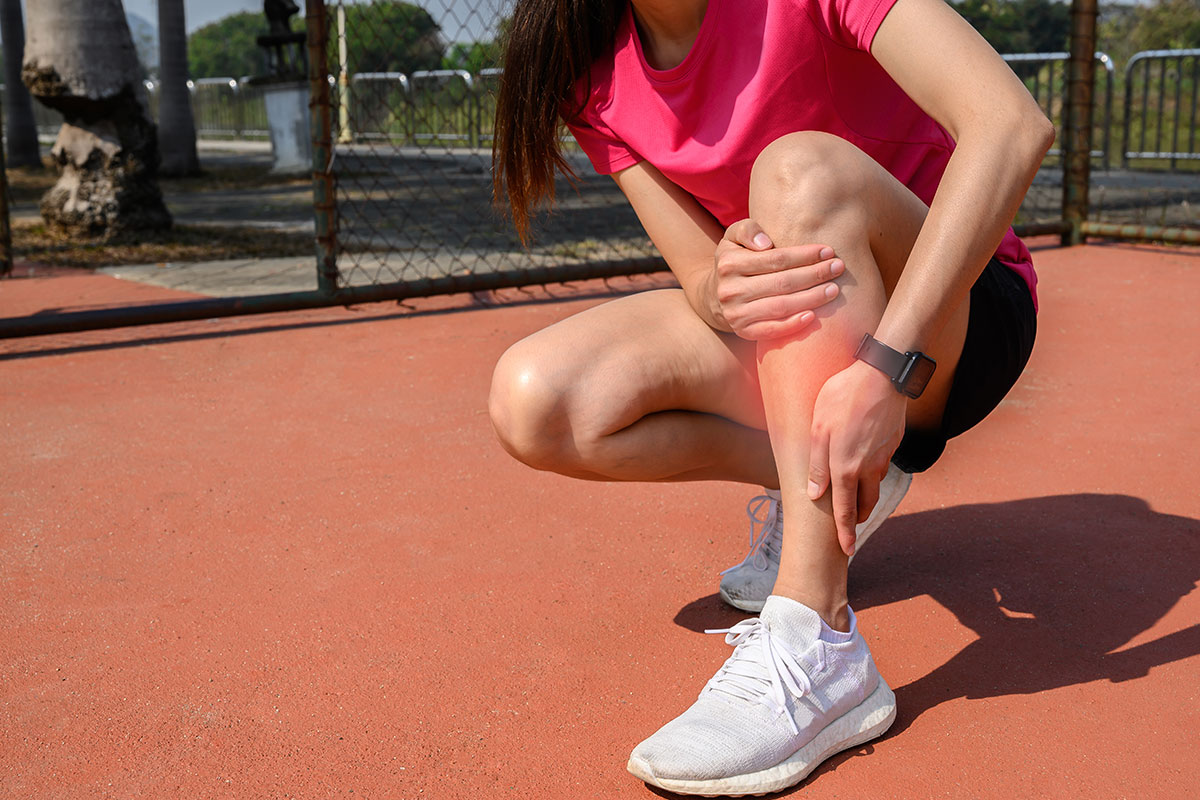
Shin Splints
Shin splints, medically referred to as Medial Tibial Stress Syndrome, commonly denote pain along the front of the lower leg.
While “shin splints” is more of a symptom description rather than a specific diagnosis, it encapsulates various underlying causes of leg discomfort.
The predominant cause of shin splints is the inflammation of the periosteum, a protective sheath that envelops the tibia (shin bone). This inflammation often results from the excessive pulling force exerted by the muscles attached to the tibia, leading to discomfort and, if unchecked, potentially evolving into stress fractures.


Symptoms of Shin Splints include
- Pain and tenderness localized on the inner aspect of the shin
- Persistent lower leg pain that might intensify with activity
- Noticeable bumps along the bone
- Increased pain when flexing the toes or foot downward
- Swelling in the lower leg area
- Redness along the inner shin
Causes Of Shin Splints
Shin splints are multifactorial, typically arising from a blend of:
Overuse: Exerting beyond one’s fitness capacity can strain the muscles, tendons, bones, and joints, contributing to shin splints.
Improper Technique: Faulty running mechanics, such as foot pronation or having flat feet, can increase strain on the leg.
High-Impact Activities: Running on hard or uneven surfaces amplifies the risk of injuring shin muscles and tendons.
Inadequate Footwear: Shoes that fail to provide adequate support can be a significant factor in developing shin splints.


Tips For Managing Shin Splints
Rest: Prioritizing rest can significantly accelerate healing.
Apply Ice: Early stages benefit from cold therapy, which helps alleviate pain and reduce inflammation.
Supportive Footwear: Ensure your shoes offer the right support for your activities.
Alternative Exercises: Maintain fitness with low-impact activities like cycling or swimming.
Strengthen Calf Muscles: Targeted exercises can fortify calf muscles, providing better shin support.
Shin Splint Treatments
Myotherapy offers a comprehensive approach to treating shin splints, focusing on both symptom relief and addressing root causes:
Muscle Imbalance Assessment: Identifying and correcting imbalances in the lower leg and foot to alleviate stress on the shin.
Soft Tissue Massage: Targeted massage of the lower leg (and often the gluteal and upper leg muscles) can relieve tension and pain.
Dry Needling: This technique targets specific trigger points to reduce muscle tightness and pain.
Exercise Prescription: Customized flexibility and strengthening exercises to restore balance and function.
Referral: Professional referral for persistent symptoms to ensure comprehensive care.
By addressing the multifaceted causes of shin splints and implementing proactive management strategies, Myotherapy provides an effective pathway to relief and recovery. This holistic approach not only alleviates current discomfort but also equips individuals with the knowledge and tools to prevent future occurrences, ensuring a swift return to active and pain-free living.







